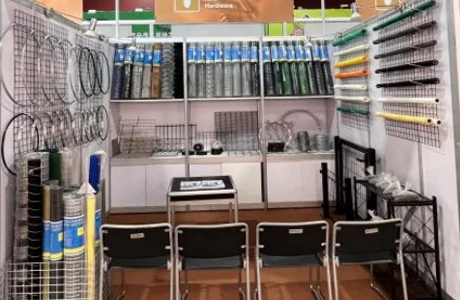Analyzing the Expenses Associated with Welded Wire Fabric Production and Its Market Implications
Understanding the Cost of Welded Wire Fabric
Welded wire fabric (WWF) is a versatile construction material that has gained immense popularity due to its strength, durability, and cost-effectiveness. Composed of intersecting wires that are welded together at their joints, this fabric is primarily used for reinforcing concrete in various construction applications. Understanding the cost associated with welded wire fabric is essential for builders, contractors, and engineers when planning projects and budget allocations.
Factors Influencing the Cost of Welded Wire Fabric
1. Material Costs The primary raw material for welded wire fabric is steel, which is subject to fluctuating market prices. Factors such as availability, demand, and the overall economic climate can significantly impact material costs. For instance, during infrastructure booms, the demand for steel increases, driving up prices. Furthermore, the specific grade and diameter of wire used in the fabric can also affect costs. Higher-quality or specialized steel may come at a premium.
2. Production Processes The cost of producing welded wire fabric involves various processes, including drawing the wire, welding, and sometimes coating. Each of these processes has associated labor, energy, and equipment costs. Advances in technology may streamline production, potentially lowering costs, but initial investments in new machinery can be substantial.
cost of welded wire fabric

3. Fabric Specifications The dimensions and specifications of welded wire fabric—such as wire spacing (both vertical and horizontal), wire diameter, and sheet size—play a crucial role in determining the overall cost. Custom specifications tailored for specific projects may incur additional costs due to the need for specialized manufacturing processes.
4. Transportation and Handling Once produced, the transport of welded wire fabric to job sites is a significant factor in its overall cost. The weight and bulkiness of the material can lead to high shipping costs, especially if the job site is located far from the supplier. Proper handling and storage at the construction site also add to the cost due to the need for specialized equipment and labor.
5. Market Demand and Project Scale The economic climate and construction market trends can influence the cost of welded wire fabric. In periods of high demand, prices may increase due to limited supply. Conversely, during economic downturns, prices may stabilize or even decrease. Additionally, large-scale projects may benefit from bulk purchasing, reducing the per-unit cost of welded wire fabric.
Conclusion
In conclusion, the cost of welded wire fabric is influenced by various factors, ranging from raw material prices to production methods and market conditions. For contractors and builders, it is crucial to accurately estimate these costs when planning projects, as even minor fluctuations can have substantial budget implications. By staying informed about market trends and understanding the various factors affecting costs, professionals in the construction industry can make informed decisions that optimize both quality and financial resources in their projects.
-
Weather Resistance of Woven Wire and Chicken Wire Fencing MaterialsNewsJun.05,2025
-
Umbrella Nails Innovations in Roofing Fasteners for Wind ResistanceNewsJun.05,2025
-
Modern Barbed Wire Fence Designs for Perimeter ProtectionNewsJun.05,2025
-
How Iron Nail Wire Enhances Nail Strength and Installation EfficiencyNewsJun.05,2025
-
High-Security Razor Fence Solutions for Perimeter ProtectionNewsJun.05,2025
-
Durable Wire Netting Fence Solutions for Animal EnclosuresNewsJun.05,2025




